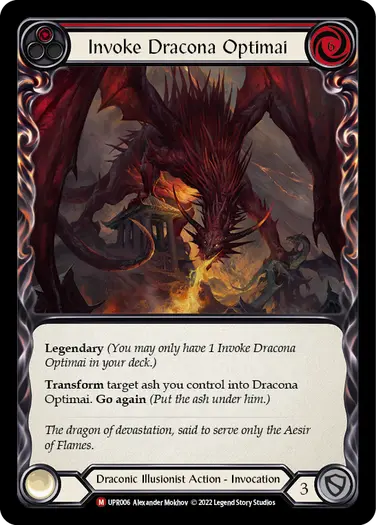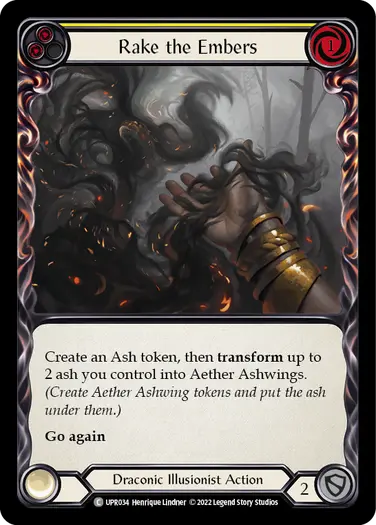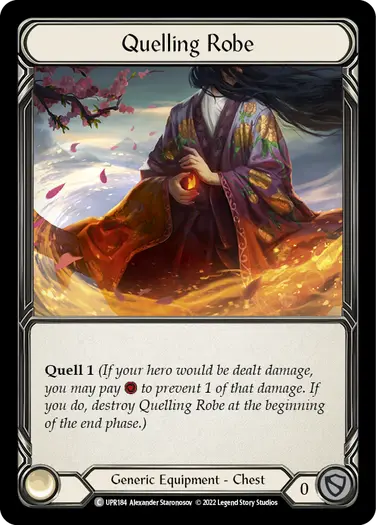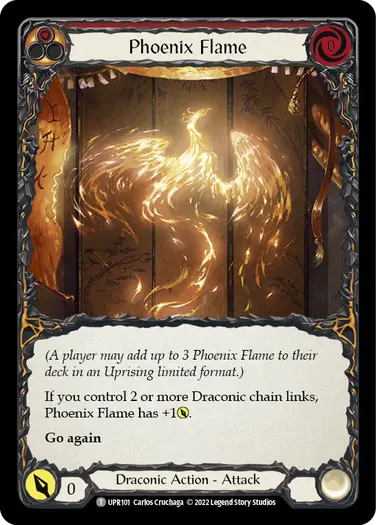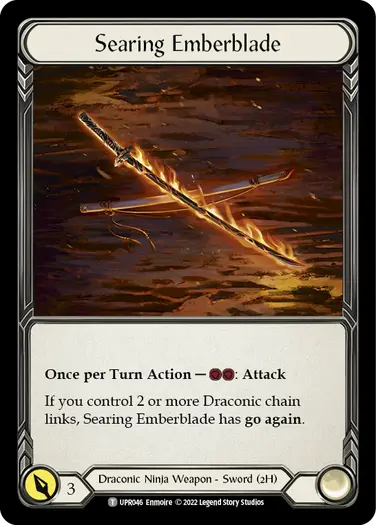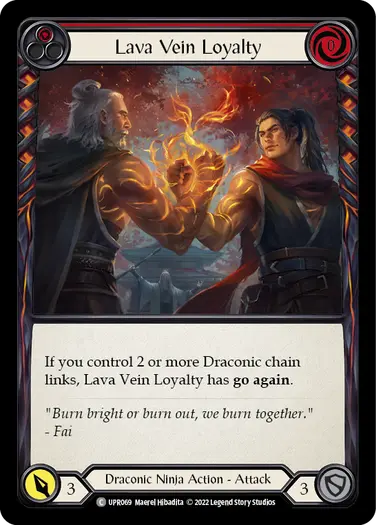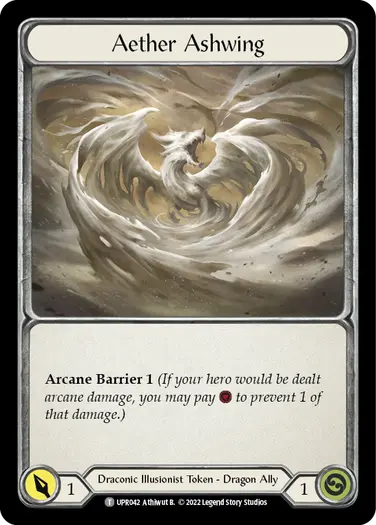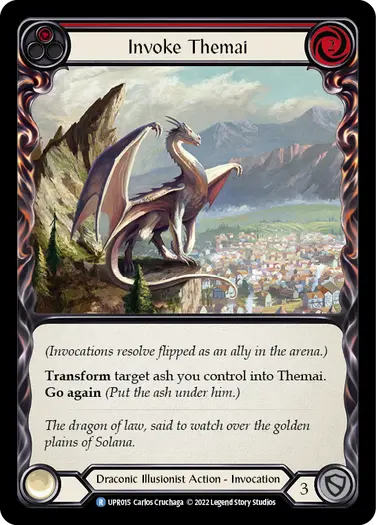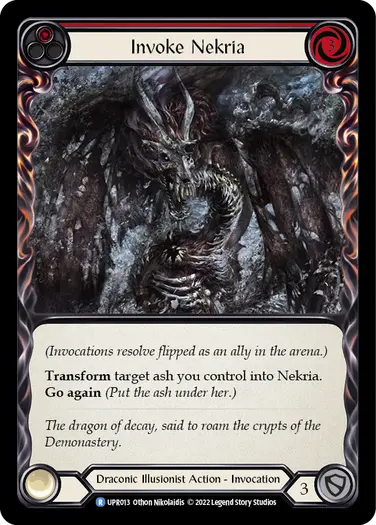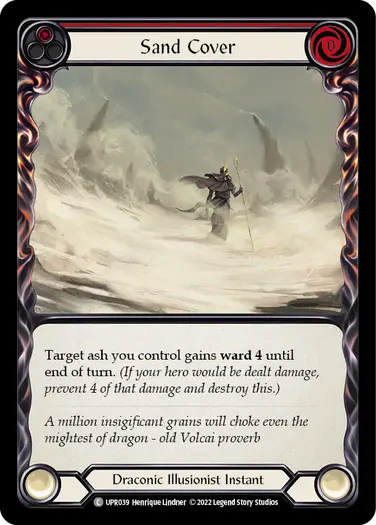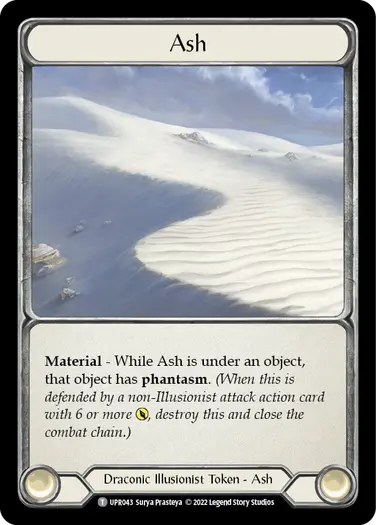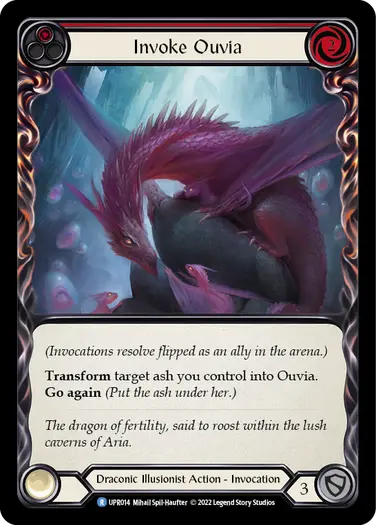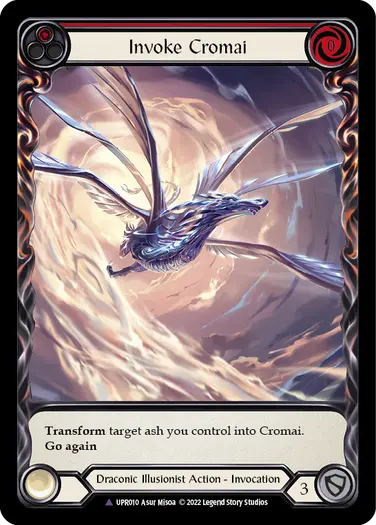Ahead of Uprising's official release worldwide (July 1st in the U.S., and June 24th for the rest of the world), Joshua Scott addresses some key rules questions about the upcoming set.
Can I play an invocation, pitching an red card, and target the Ash I create with Dromai?
No. Dromai’s has a triggered ability that triggers when the player pitches a red card. When you play a card, you must first declare the targets of the card before you pay any resource costs. Only once the card is played, and both players pass priority will the triggered effect of Dromai resolves and create an Ash, which means that the Ash simply doesn’t exist before you need to target it to play the card.
It’s important to note that this is not the case for cards such as Rake the Embers, where the effect that transforms the Ash into an Aether Ashwing is not a targeted effect. This means that the Ash is chosen on the resolution of the card after the triggered effect of Dromai would resolve and create an Ash.
Tyler is playing as Dromai and does not control any Ash tokens. Tyler can not play Invoke Dracona Optimai, even if they pitch a red card, because there are currently no permanents with the ash subtype that can be targeted to play the card.
Tyler is playing as Dromai and does not control any Ash tokens. Tyler plays Rake the Embers (yellow) pitching a red card. Dromai’s triggered effect resolves, creating one Ash token under Tyler’s control. Rake the Embers resolves, creating one more Ash token under Tyler’s control, then Tyler may choose to transform each of the 2 Ash tokens they control into Aether Ashwings.
Can you use Quell multiple times?
Yes and no. Yes, you can apply the same Quell multiple times befores its source is destroyed at the beginning of the end phase. No, you can not apply it more than once per EVENT.
A damage event is a single effect of damage produced by some source in the game. In most cases, the damage a source deals is done in a single event; on the resolution of the card on the stack or as an attack as a chain link during the damage step of combat. However, there are some sources that may deal damage in distinct/separate events of damage. When a source deals damage multiple times, Quell can be applied once each time damage is dealt by that source. A single instance of Quell can not be used multiple times on a single event to reduce the damage by more than 1.
Nic controls only Quelling Robes. Tyler attacks Nic with Searing Touch as chain link 4. First, Searing Touch’s triggered effect resolves and is about to deal 2 untyped damage to Nic. Nic applies their Quell prevention effect to reduce the damage to 1. Nic does not defend and the players move to the damage step of combat. Searing Touch is about to deal 4 physical damage to Nic. Nic applies their Quell prevention effect to reduce the damage to 3. At the beginning of the end phase, Quelling Robes is destroyed by Quell’s delayed-triggered effect.
Do Draconic attacks count themselves as Draconic chain links you control?
Yes. Generally, effects that are conditional on the number of Draconic chain links are relevant after its source becomes a chain link on the combat chain. Typically, you would play a Draconic attack action card, it becomes a chain link, then the condition is evaluated and the effect is generated (if you control enough Draconic chain links).
When you use an activated ability to attack (Searing Emberblade, or any dragon), the source of that ability moves to the combat chain to become a chain link. As such, it is considered a Draconic chain link you control for the purposes of effects, including its own.
Tyler attacks Nic with Phoenix Flame (chain link 1). After the chain link resolves Tyler attacks Nic again with Searing Emberblade (chain link 2). Searing Emberblade has go again because Tyler currently controls 2 Draconic chain links. After the chain link resolves, Tyler gains an action point and can play/activate another action card or ability.
Does attacking with, or attacking against, an ally break the combat chain?
No. Attacking with an ally is similar to attacking with a weapon. The difference is that instead of your hero being considered as the attacker (attacking hero), you’ve instructed an ally to attack and therefore they are the attacker (attacking ally). As such, if you’re not the attacking hero, you can’t play/activate attack reaction cards/abilities during the reaction step for THAT chain link in particular. Similarly, when you attack an ally, you’ve only chosen a different target for your attack. The difference is that instead of targeting the opposing hero (defending hero), you’re targeting an ally (defending ally). As such, if the opponent is not the defending hero, they can’t play/activate defense reaction cards/abilities during the reactions step for THAT chain link in particular.
As mentioned in the previous question, allies can also contribute toward the chain links you control for the purposes of some conditional effects.
Both Tyler and Nic control an Aether Ashwing. Tyler attacks Nic with their Aether Ashwing (chain link 1). After the chain link resolves, Tyler attacks Nic's Aether Ashwing with a Phoenix Flame. The Phoenix Flame has 1 power, because changing between ally and non-ally attacks does not close the combat chain in any form and Tyler currently controls 2 Draconic chain links.
Can I target an Ash under a dragon with Sand Cover?
No. When a card or token is under a permanent in the arena, it can not be selected as a target for targeted effects. In addition, if a card or token has gained an ability and then is put under a permanent in the arena, that ability it has gained becomes non-functional (there are few exceptions, such as while-static abilities like “Material”).
Tyler controls 1 Ash token. Tyler plays and resolves Sand Cover (red), targeting the Ash token they control. Tyler then activates and resolves Silken Form transform the Ash into an Aether Ashwing. Because the Ash is now under the Aether Ashwing, Tyler does not gain the benefit of Ward 4, and can not target it with any effects that require an Ash as a target.
Does Ash stay in the arena, if a dragon is destroyed/dies?
No. When a card or token is under a permanent in the arena, it is essentially bound to that permanent. If the permanent leaves the arena or otherwise ceases to exist, any cards under it go to their owner's graveyard, and any tokens under it cease to exist. This means that once an Ash has been transformed into a dragon, it will remain under that dragon until the dragon dies, and then it will cease to exist.
Tyler controls an Aether Ashwing with an Ash token under it. Nic deals 1 damage to the Tyler's Aether Ashwing, reducing its life total to 0. As the Aether Ashwing dies, it ceases to exist (because its a token) and the Ash under it also ceases to exist (because it is also a token).
How do you draft a set like Uprising when it contains double-faced cards (DFC)?
Carefully.
In a Casual or Competitive level tournament, players may start with a token in their face-down pile. When a player opens or is passed a pack that contains a DFC, they can not reveal or otherwise convey that their pack contains a DFC. When a player drafts a DFC, they must do so by putting it under another card in their face-down pile (which may include a token), to prevent it from being the top card of their pile. Players are not allowed to actively seek to discover who has a DFC in their current pack, or who has drafted a DFC that pick.
In Professional level tournaments, packs should be opened in advance with DFC cards replaced by an appropriate placeholder card indicating the correct DFC, then packs should be repackaged to be used specifically for the draft. Players that have drafted placeholder cards are given the DFC it represented in the pack prior to any deck construction.
It's very important to note that the presence of a DFC can significantly alter the dynamic and strategy of a draft if its position is widely known to the player's drafting. Uprising is not designed to be drafted with players having advance knowledge of the DFC in each player’s pack, and who is drafting each DFC.

